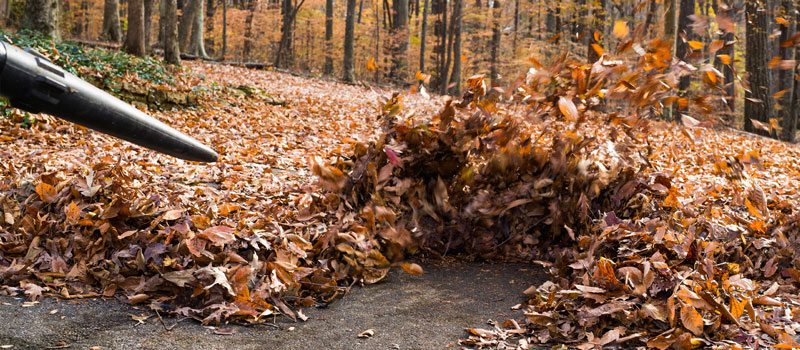As the seasons change and the trees shed their gloriously coloured leaves, many gardeners take time to shut their gardens down around now, before putting their feet up indoors until spring is sprung again. From the point of view of your lawn though, it’s really important that we deal with those leaves and clear them away to prevent the damage they cause. In fact, it’s THE most important thing we can do for our lawns at this time of year. Many of our clients have invested in having their lawns scarified, aerated and over-seeded this autumn, so it would be more than a shame if all that hard work was compromised by a layer of dead leaves being left to rot on the grass.
A layer of leaves will cause extensive damage by preventing air and light from getting to the grass plants that make up our lawns. This stifling will quickly kill off healthy, established grass plants (never mind freshly-grown, new ones) and will soon lead to a sickly, patchy lawn which will take time and effort to restore to its former health. The good news is that this sorry picture is avoidable. We just need to knuckle down and keep our lawns free of those irksome leaves (funny how they were gloriously coloured just a few lines ago!).

Raking leaves – The work just keeps on piling up!
Whichever way you look at it, clearing leaves from a lawn is one of those tiresome, tedious jobs which can be soul-destroying. Especially if your lawn is subjected to a regular flurry of new leaves being blown across it in the wind. Even worse if those leaves are coming from trees outside of your garden! This can make an already repetitive, time-consuming chore seemingly stretch out forever over the winter. You may choose to lessen the burden by using a leaf blower rather than a rake, but whichever method you adopt, you may like to consider turning those leaves to good use by converting them into Leaf Mould. When well-rotted (ie more than 2 years old) , Leaf Mould is an excellent Soil Improver and can even be used as seed-sowing compost. In its younger form it is still very useful, as its uses include mulching, lawn top-dressing in autumn and winter covering for bare soil.
Making Leaf Mould is very simple; Once collected, load your leaves into a black plastic bin liner and if they’re dry, add some water. Tie the bag loosely and pierce some holes in it to allow air flow. Stack the bags in a sheltered spot.
Alternatively, you can build a Leaf Mould bin in much the same way as a conventional 1-metre high Compost Bin, although the sides need only consist of chicken wire. Periodically turn the leaf heap over with a fork, to assist the decomposition process. Over time, either of these methods will end up giving you a rich source of versatile organic matter, at zero cost. There’s a happy thought to keep in mind as you’re sweeping away those wretched leaves!

Black Gold! A fistful of nutricious goodness, Free of Charge!


